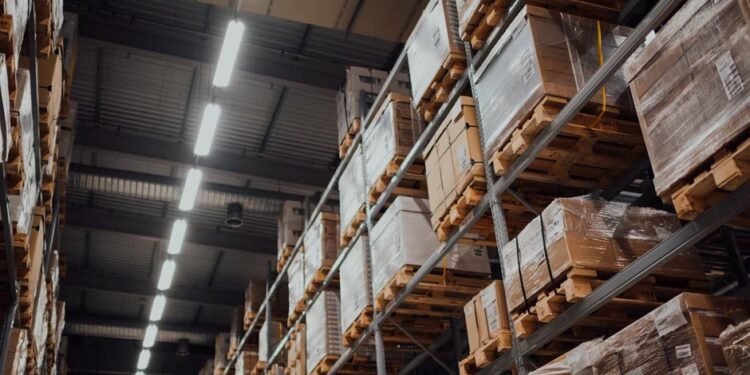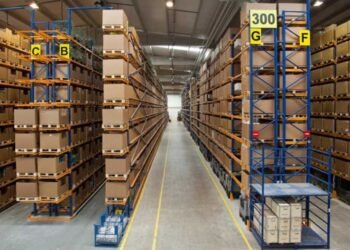In today’s fast-paced and highly competitive business landscape, warehouses play a crucial role in the supply chain. They serve as the backbone of the distribution process, ensuring that products are efficiently stored, organized, and shipped. To meet the growing demands of the industry, warehouses need to leverage the right technology.
In this article, you will explore the various technologies that are essential for warehouses to operate at optimal efficiency and productivity.
1. Warehouse Management Systems (WMS)
One of the fundamental technologies that warehouses need is a robust Warehouse Management System (WMS). A WMS is a software application that helps in managing and controlling the operations within a warehouse. It provides real-time visibility into inventory levels, automates order fulfillment processes, and optimizes storage space utilization.
With a WMS, warehouses can streamline their receiving, put-away, picking, and shipping processes. The system provides accurate data on inventory levels, enabling businesses to make informed decisions and prevent stockouts or overstocking situations. Additionally, a WMS can integrate with other business systems such as Enterprise Resource Planning (ERP) software, enabling seamless data flow across different departments.
2. Inventory Management Systems
Closely related to WMS, Inventory Management Systems are crucial for warehouses to maintain accurate and up-to-date inventory records. These systems utilize barcode scanning or radio frequency identification (RFID) technology to track the movement of goods throughout the warehouse.
By implementing an Inventory Management System, warehouses can automate inventory tracking, reducing the risk of human errors and improving overall efficiency. The system ensures that the right products are available at the right time, preventing stockouts and minimizing excess inventory. Furthermore, advanced inventory management systems can analyze historical data to generate demand forecasts, helping warehouses optimize their stocking levels and improve supply chain planning.
3. Automated Storage and Retrieval Systems (AS/RS)
Automation is revolutionizing the warehousing industry, and Automated Storage and Retrieval Systems (AS/RS) are at the forefront of this transformation. AS/RS are advanced robotic systems that automate the process of storing and retrieving goods in a warehouse. These systems use a combination of conveyors, cranes, and robotic arms to move products with precision and speed.
The benefits of AS/RS are manifold. They significantly increase storage capacity by utilizing vertical space effectively. AS/RS can retrieve items from high shelves and deliver them to the pick-up area, reducing the need for manual labor and minimizing the risk of injuries. Moreover, these systems improve order accuracy by minimizing human errors in picking and packing.
4. Robotics and Automation in Warehouses
In addition to AS/RS, robotics and automation are being increasingly utilized in various other aspects of warehouse operations. Autonomous mobile robots (AMRs) are being deployed for tasks such as goods transportation, picking, and packing. These robots can navigate through the warehouse, avoiding obstacles and optimizing the picking routes.
Automation also extends to the sorting and packaging processes. Robotic arms can efficiently sort products based on their size, weight, or destination, improving order accuracy and reducing labor costs. Automated packaging machines can package products quickly and precisely, eliminating the need for manual intervention.
5. Internet of Things (IoT) in Warehouse Management
The Internet of Things (IoT) has transformed many industries, and warehousing is no exception. IoT devices, such as sensors and beacons, can be deployed throughout the warehouse to collect real-time data on various parameters. For example, temperature and humidity sensors can ensure that perishable goods are stored in optimal conditions, minimizing spoilage.
IoT devices also enable predictive maintenance of warehouse equipment. By monitoring the performance of machines and analyzing data, warehouses can identify potential issues before they escalate into costly breakdowns. This proactive approach helps in reducing downtime and improving overall operational efficiency.
6. Warehouse Security Technologies
Given the value and importance of the goods stored in warehouses, security is a paramount concern. Warehouses need to invest in advanced security technologies to protect their assets. These technologies may include video surveillance systems, access control systems, and intrusion detection systems.
Video surveillance systems with high-resolution cameras and intelligent analytics can monitor the warehouse premises and detect suspicious activities in real time. Access control systems, such as biometric scanners or RFID-based locks, ensure that only authorized personnel can enter restricted areas. Intrusion detection systems can detect any unauthorized entry attempts and trigger immediate alerts.
7. Warehouse Power Technology
Power supply is a critical aspect of warehouse operations, and a lithium battery power station is an essential technology in a warehouse setting. With the increasing reliance on electronic devices, such as laptops, barcode printers, and scanners, having a reliable power source is crucial for uninterrupted operations. These power stations offer a portable and efficient solution to this need.
Furthermore, lithium batteries have a longer lifespan and higher energy density compared to traditional lead-acid batteries. This makes them an ideal choice for warehouses where continuous power supply is essential for smooth workflow and productivity.
Conclusion
In conclusion, warehouses today require a wide range of technologies to operate efficiently and stay ahead of the competition. By leveraging these technological advancements, warehouses can optimize their operations, enhance productivity, and meet the ever-increasing demands of the modern business landscape.












